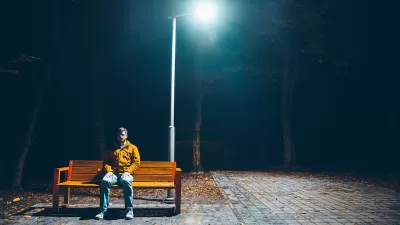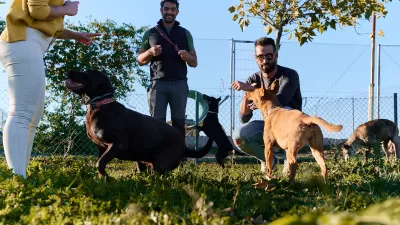After a murder in his neighborhood, writer Peter Lovenheim decided that he needed to become closer to his neighbors. So he packed up his sleeping bag and invited himself over for a sleepover.
"According to social scientists, from 1974 to 1998, the frequency with which Americans spent a social evening with neighbors fell by about one-third. Robert Putnam, the author of "Bowling Alone," a groundbreaking study of the disintegration of the American social fabric, suggests that the decline actually began 20 years earlier, so that neighborhood ties today are less than half as strong as they were in the 1950s.
Why is it that in an age of cheap long-distance rates, discount airlines and the Internet, when we can create community anywhere, we often don't know the people who live next door?
Maybe my neighbors didn't mind living this way, but I did. I wanted to get to know the people whose houses I passed each day - not just what they do for a living and how many children they have, but the depth of their experience and what kind of people they are.
What would it take, I wondered, to penetrate the barriers between us? I thought about childhood sleepovers and the insight I used to get from waking up inside a friend's home. Would my neighbors let me sleep over and write about their lives from inside their own houses?"
FULL STORY: Won’t You Be My Neighbor?

Trump Administration Could Effectively End Housing Voucher Program
Federal officials are eyeing major cuts to the Section 8 program that helps millions of low-income households pay rent.

Planetizen Federal Action Tracker
A weekly monitor of how Trump’s orders and actions are impacting planners and planning in America.

The 120 Year Old Tiny Home Villages That Sheltered San Francisco’s Earthquake Refugees
More than a century ago, San Francisco mobilized to house thousands of residents displaced by the 1906 earthquake. Could their strategy offer a model for the present?

HSR Reaches Key Settlement in Northern California City
The state’s high-speed rail authority reached an agreement with Millbrae, a key city on the train’s proposed route to San Francisco.

Washington State Legislature Passes Parking Reform Bill
A bill that would limit parking requirements for new developments is headed to the governor’s desk.

Missouri Law Would Ban Protections for Housing Voucher Users
A state law seeks to overturn source-of-income discrimination bans passed by several Missouri cities.
Urban Design for Planners 1: Software Tools
This six-course series explores essential urban design concepts using open source software and equips planners with the tools they need to participate fully in the urban design process.
Planning for Universal Design
Learn the tools for implementing Universal Design in planning regulations.
Ada County Highway District
Clanton & Associates, Inc.
Jessamine County Fiscal Court
Institute for Housing and Urban Development Studies (IHS)
City of Grandview
Harvard GSD Executive Education
Toledo-Lucas County Plan Commissions
Salt Lake City
NYU Wagner Graduate School of Public Service





























